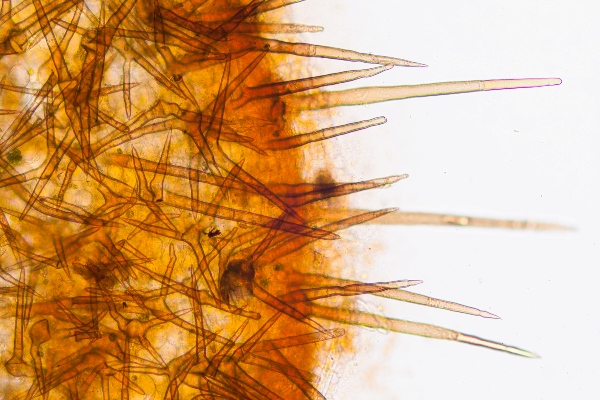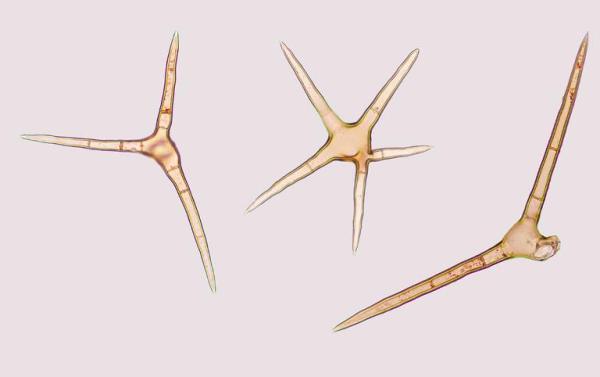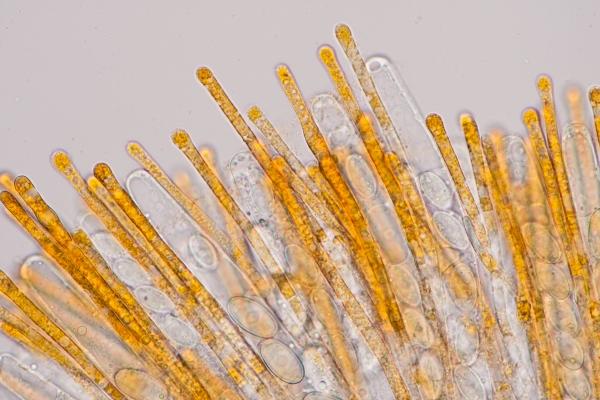Cheilymenia stercorea (Pers.) Boud.
Phylum: Ascomycota - Class: Pezizomycetes - Order: Pezizales - Family: Pyronemataceae
Distribution - Taxonomic History - Etymology - Identification - Reference Sources
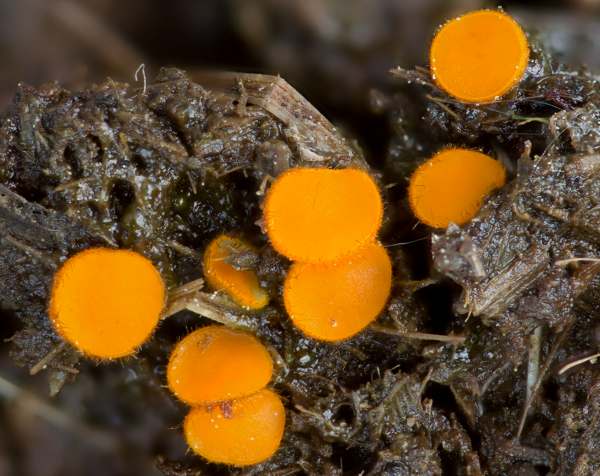
The numerous eyelash-fringed little cup fung are fiendishly difficult to identify from macroscopic features alone. That's largely because few of them are more than 1cm in diameter and many, including Cheilymenia stercorea, rarely reach much more than a 1mm across. At the very least an eyeglass is an essential tool when seeking these tiny ascomycetes, most of which grow on cow-pats or on various other kinds of animal dung. Cheilymenia stercorea has a penchant for deer and horse dung and, less commonly, cow pats.
The key to identifying to species level the various species of Cheilymenia and Scutellinia (the other main group of eyelash-fringed disc fungi) of which there are close on 50 known in Britain and Ireland, is by microscopic examination of asci, spores and any hairs or 'lashes' that cover the infertile surface.
Distribution
This colourful ascomycete is an uncommon sight on animal dung, but it can be found throughout Britain and Ireland as well as in all other European countries and North America.
Taxonomic history
Described as Peziza stercorea by Christiaan Hendrik Persoon in 1790, this species was transferred top the genus Cheilymenia in 1907 by French mycologist Jean Louis Emile Boudier (1828 - 1920).
Synonyms of Cheilymenia stercorea include Lachnea stercorea (Pers.) Cooke, Peziza scutellata Batsch, Peziza stercorea Pers., Humaria stercorea (Pers.) Fuckel, Lasiobolus stercoreus (Pers.) P. Karst., and Scutellinia stercorea (Pers.) Kuntze.
Etymology
The specific epithet stercorea means 'of dung', which is where these little ascomycete disc fungi are invariably found.
Identification guide
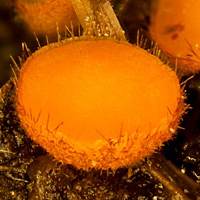 |
FruitbodyShallow sessile (stemless) apothecial discs that grow to between 1 and 3mm in diameter and 0.5 to 1.5mm tall; usually in groups and sometimes in swarms on animal dung. The fertile (upper) asci-bearing surface is orange, and the rim is fringed with hairs up to 0.7mm long. Stellate (star-shaped) septate hairs cover the infertile surface everywhere except at the margin. |
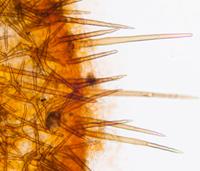 |
Marginal hairsThe long hairs around the margin of the cup are unbranched. |
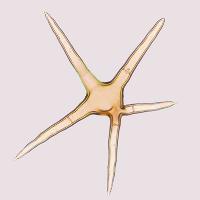 |
Lower hairsThis cup fungus is distinguished by stellately branched shorter hairs all over the lower part of the infertile surface except near to and at the margin, where the hairs are unbranching (see above). |
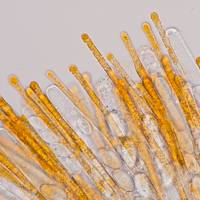 |
Asciicylindrical, inamyloid, 175 - 220 x 10-13.5µm, with eight spores per ascus. ParaphysesCylindrical with slightly clavate tips. |
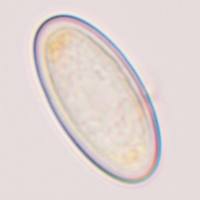 |
SporesEllipsoidal, smooth, 17-20 x 8.5-10µm; hyaline, without guttules. Spore printWhite. |
Odour/taste |
Odour is difficult to discern because of the smelly nature of the growing substrate; taste is reportedly not distinctive - although who would want to try tasting such dubious offerings? |
Habitat & Ecological role |
Saprobic, on all kinds of herbivore dung, but especially deer and horse dung. |
Season |
May to early November in Britain and Ireland. |
Similar species |
Scutellinia crucipila is very similar, also with stellate hairs; it grows on damp bare soil and sometimes on soil in mossy or grassy habitats. Several other ascomycetous disc fungi also colonise animal dung. Few can be identified from macroscopic features alone, and so microscopic examination of asci, spores and other cell structures is usually necessary. |
Reference Sources
Fascinated by Fungi, 2nd Edition, Pat O'Reilly 2016, reprinted by Coch-y-bonddu Books in 2022.
Dennis, R.W.G. (1981). British Ascomycetes; Lubrecht & Cramer; ISBN: 3768205525.
Breitenbach, J. & Kränzlin, F. (1984). Fungi of Switzerland. Volume 1: Ascomycetes. Verlag Mykologia: Luzern, Switzerland.
Medardi, G. (2006). Ascomiceti d'Italia. Centro Studi Micologici: Trento.
Dictionary of the Fungi; Paul M. Kirk, Paul F. Cannon, David W. Minter and J. A. Stalpers; CABI, 2008
Taxonomic history and synonym information on these pages is drawn from many sources but in particular from the British Mycological Society's GB Checklist of Fungi.
Acknowledgements
This page includes pictures kindly contributed by David Kelly.
Fascinated by Fungi. Back by popular demand, Pat O'Reilly's best-selling 450-page hardback book is available now. The latest second edition was republished with a sparkling new cover design in September 2022 by Coch-y-Bonddu Books. Full details and copies are available from the publisher's online bookshop...
